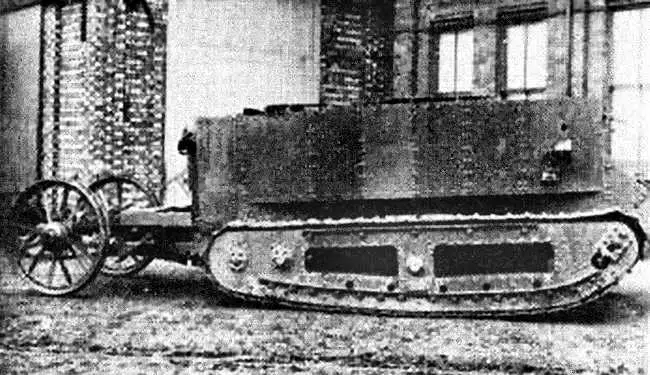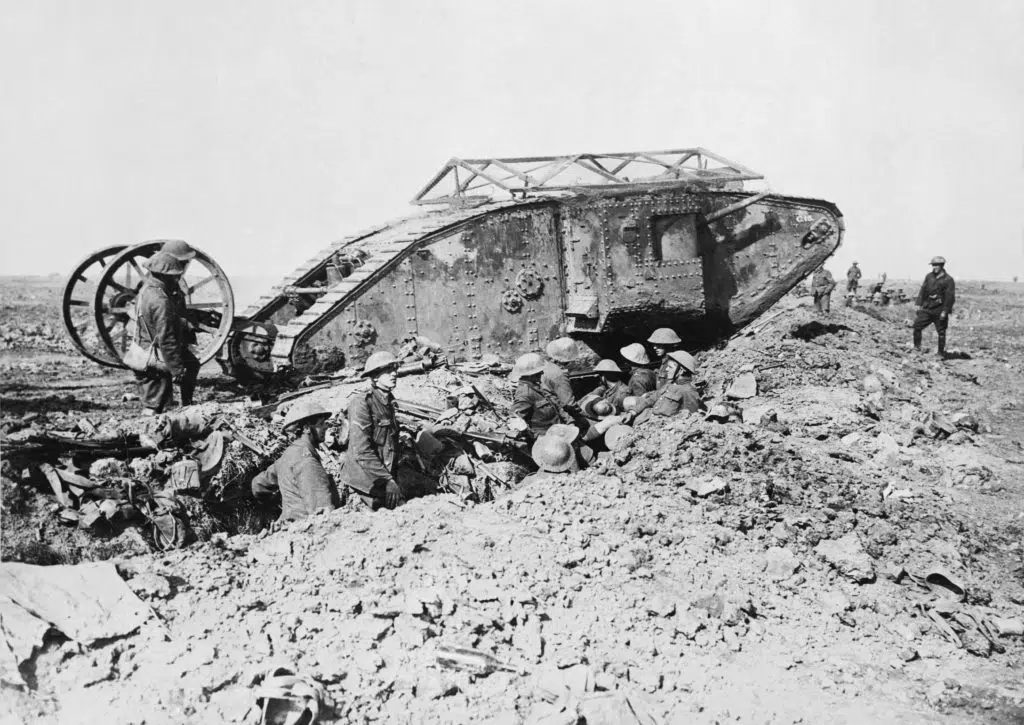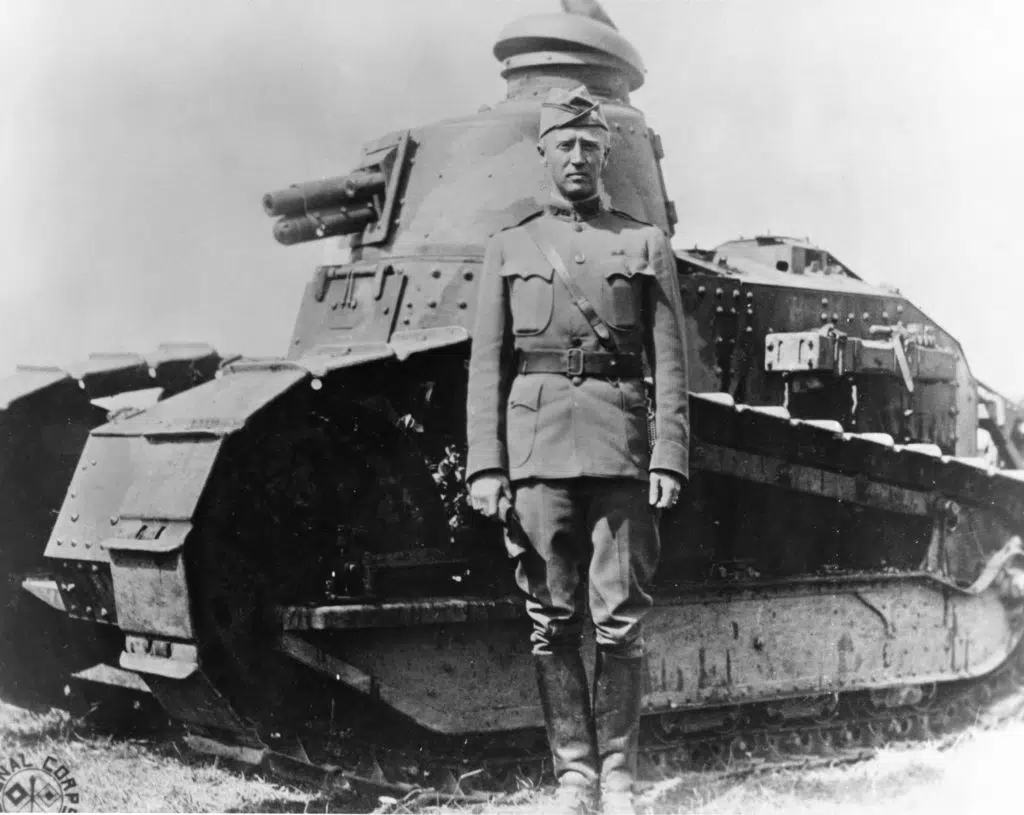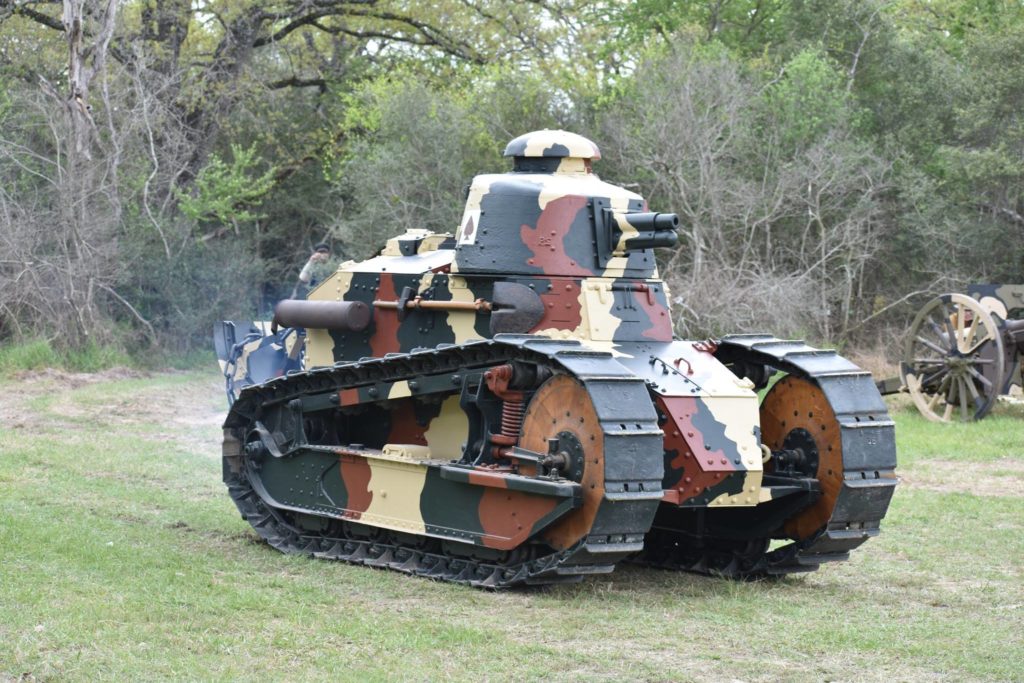Tanks in WWI
“Victory in this war will belong to the belligerent who is the first to put a cannon on a vehicle capable of moving on all kinds of terrain”
— Colonel Jean Baptiste Estienne, 24 August 1914
As with most inventions, the origins of the tank are long and convoluted while capturing the fascination. Leonardo Da Vinci created a design for an armored self-propelled vehicle and H.G. Wells included one in his short story “The Land Ironclads”. Over the years, many designs and prototypes of armored wagons and tracked vehicles were proposed and abandoned. An actual working model proved elusive. While necessity is often the mother of invention, optimal timing is also vital. Trench warfare created the demand. The development of a reliable combustion engine, continuous tract for use in agriculture tractors and steel plating for ships provided all three critical ingredients lacking until the 20th Century.
During WWI, both the British and French independently began to actively develop armored fight vehicles. Once again, most ideas did not develop to working models. Tank design in England gained an unexpected ally when Winston Churchill, First Lord of the Admiralty, established the Landship Committee to develop a “land vehicle that could sail over terrain like a ship on water”. The Landship Committee was composed mainly of naval officers, politicians and engineers. The engineering challenges were great, but by December 1915 the first completed tank prototype, “Little Willie” was constructed. For secrecy and deception, the paperwork described the prototypes as “water carriers” or “water tanks’ or simply “tanks”. To perpetuate the deception, the Landship Committee became known officially as the Tank Supply Committee. The naval background of the Landship Committee explains the nautical terms as hatch, hull, bow, and ports used with tanks

Little Willie, is preserved in the collection of The Tank Museum, Bovington, England
While “Little Willie” was considered an engineering success, it still had design issues. The next British prototype, known as “Mother” or “Big Willie”, a rhomboidal shaped vehicle with a low center of gravity and long track length was successfully demonstrated in early 1916. As a result, a total of 150 Mark I tanks were ordered. The British Mark I tank was first used in active combat during the Battle of the Somme in September 1916.

Even though the British were the first to use tanks in combat, the French continued with their own tank development. The French developed the medium Schneider CA and heavy Saint-Chamond but their lasting contribution was the Renault FT. The rotating turret of the Renault FT would ultimately replace the British Mark class in operational ability and influence the design of the WWII and modern tanks.

During WWI, few commanders saw the tank’s potential. However, Gen. John J. Pershing, Commander in Chief, American Expeditionary
Forces was impressed by the British and French tank tactics and operations an thought tanks might help turn the tide of the war. Captain George S. Patton was the first officer assigned duty with tanks. Patton set up a light tank school at Bourg, France, training and organizing the light tank battalions. The 344th and 345th Tank Battalions, organized into the 304th Tank Brigade entered combat on September 12, 1918 against the Saint-Mihiel salient with the First Army. The 304th Tank Brigade, commanded by Patton, were equipped with the Renault FT, supplied by France. The going was difficult and many of the Renault FTs ran out of fuel and failed to reach their objectives but the experience provided invaluable training. The 304th Tank Brigade then took part in the Meuse-Argonne Offensive on September 26, 1918.
The use of tanks on the battlefields of WWI yielded mixed results. Many of the tanks had mechanical problems, and the poor mobility limited the military significance of the tank in WWI. Nonetheless, it was clear that tanks in some way could have a significant role in future conflicts.

